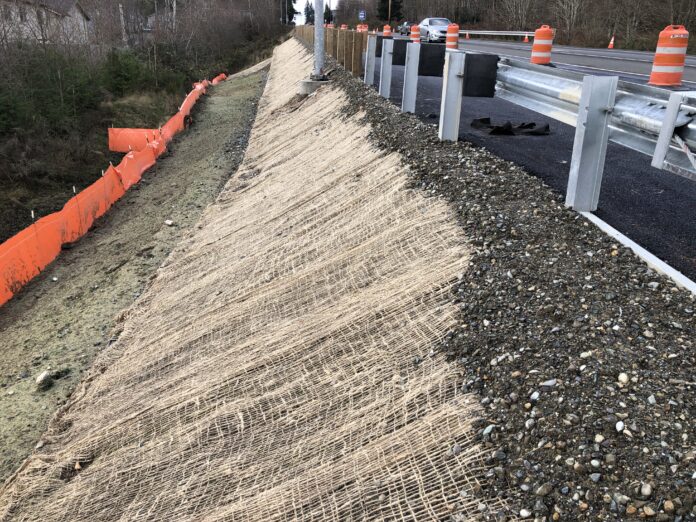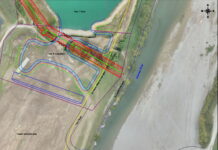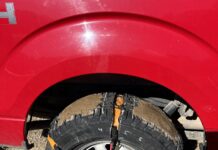As a strong physical barrier to water and sediment, silt fence has long been the default best management practice (BMP) where there is an elevated risk for sediment erosion and discharge from a project (Figure 1).
Increasingly, finding alternatives to silt fence is recommended as the enormity of the negative environmental footprint of silt fencing is becoming clear. Because silt fence is not fully biodegradable or recyclable, and because its removal usually destroys it, most silt fence is landfilled at the end of the project or simply left on-site.
With these negatives, early assessment of a construction project and the available options to silt fencing might allow adequate control of runoff while avoiding the environmental costs of silt fencing.
Finding an alternative to silt fence has usually been limited to projects where physical factors complicate its use. For instance, the work might be on an impervious surface where silt fence cannot be installed, or construction might be in a sensitive area that would be damaged by the installation and removal of silt fence.
The perimeter control options that might be chosen for sites that are not appropriate for silt fencing can also be used in the place of silt fence in other sites as well. These options include:
Burlap Fabric
If a sensitive area needs to be delineated, such as a wetland or native plant restoration, and the project will not involve dirty water or sediment discharge into that area, burlap fabric can be used. Delineation fencing is easily installed by attaching the burlap fabric to wood posts. There may be no need to trench the fence into the soil, but if greater security is desired, leave a flap at the base and hold it in place with stakes, biodegradable straw, coir wattles or even chipped wood, compost or hog fuel. At the end of the project, the burlap fencing and any stabilizing materials can then be safely left to decompose in place.
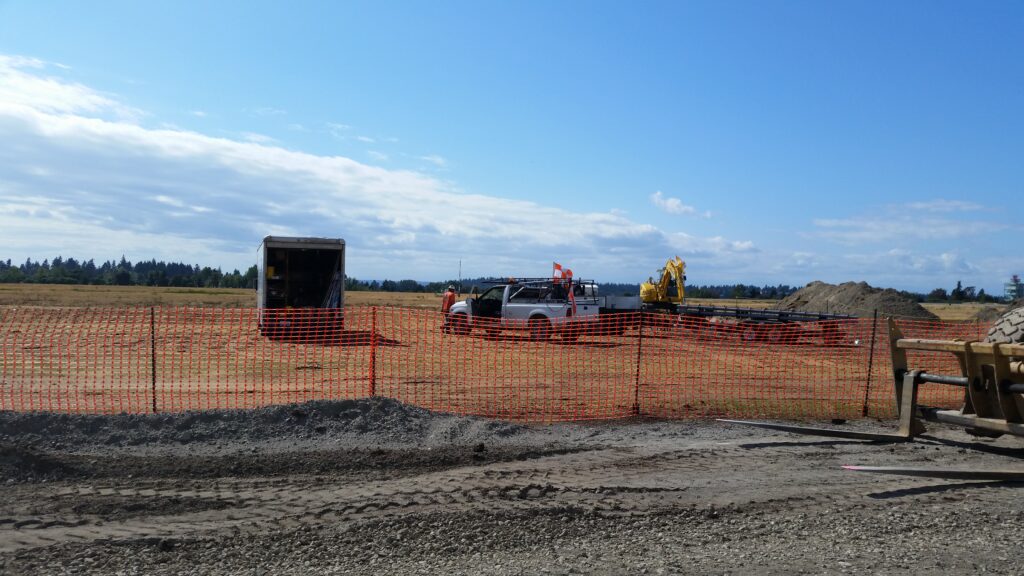
Construction Safety Fence
On many projects, silt fence is incorrectly placed along the top and sides of slopes. If the risk of erosion from the top and sides is minimal, construction safety fence is a better alternative. Construction safety fence is also a better alternative for delineating haul roads and staging areas. Because these applications do not require trenching into the soil, removal is easy. Although construction safety fence is not biodegradable, it is still a better alternative to silt fencing because it can be reused many times. (Figure 2).
Compost
If contractors have access to commercial compost, as we do in the Puget Sound region, and the site is small and flat, with minimal risk of sediment or dirty water discharge, compost berms work well. They contain the dirty water, allowing it to filter slowly before discharging clean water. At the end of the project, the compost can simply be spread on-site and seeded.
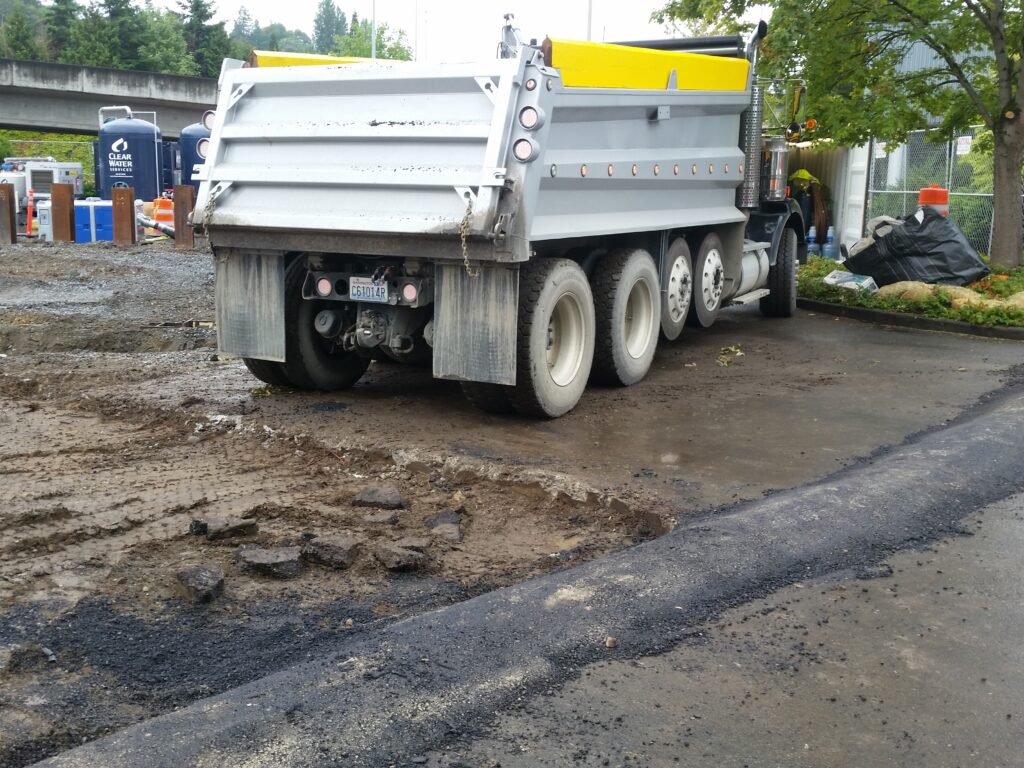
Asphalt Curbs and Berms
Asphalt curbs and berms are durable, recyclable and effective perimeter controls to use on impervious surfaces to keep clean runoff out of the work area or to contain site water. Extruded asphalt curbs can be utilized, as well as hot or cold mix berms.
Asphalt installed along the base of jersey barriers, a modular concrete or plastic barrier typically seen on road construction, also works well to contain or direct runoff. At the end of the project, the asphalt can be removed and recycled (Figure 3).
Concrete Curbs and Gutters
Phasing the project so that the permanent concrete curbs and gutters are installed as soon as possible often benefits the project by containing site water or redirecting off-site water away from the project. In addition, installing road base course and at least one lift of asphalt with the curbs and gutters creates a clean work and travel surface while site construction occurs, helping to prevent sediment track out.
Sandbags
Once asphalt for the parking or road surface is installed, stormwater runoff management will still be necessary. If the curbs and gutters or other conveyances are not complete, there could be places along the edge of the road surface where runoff could contact dirt and cause dirty runoff. Sandbags will work as temporary curbing to direct runoff away from bare soil. If you plan to use sandbags longer than thirty days, check to make sure they are ultraviolet (UV) stabilized so they don’t degrade in the sun.
Biodegradable Wattles
If the project entails planting or working around a wetland, consider using 100% biodegradable wattles. These can be filled with coir or coconut fiber, straw, compost or chipped wood held in tubes of burlap or other natural fibers. Be sure not to use wattles wrapped in plastic netting, as this will not biodegrade and could trap small reptiles and animals. Use wooden stakes to hold the wattles in place. It may be possible to leave the wattles to rot in place or remove and spread the biodegradable material on-site.
The environmental impact of defaulting to silt fence as a BMP is significant and increasingly is resulting in the use of alternatives to control sediment erosion and runoff at construction sites.
These are just a few of the alternative perimeter controls available. They can be combined and/or modified to meet specific project conditions. Engineers and contractors must always assess risk and address it appropriately, but they are encouraged to think out of the box that currently favors silt fencing. Once the best alternative is identified, be sure to modify the stormwater pollution prevention plan as needed.
Resource
Additional perimeter control alternatives may be viewed at the Pacific Northwest Chapter of IECA’s YouTube channel: https://youtu.be/NxEqVnM7vd8.
About the Expert
David Jenkins, CPESC, has worked in construction erosion control for over 30 years. He retired in 2021, after 22 years as the Port of Seattle erosion control/stormwater engineer. His experience is in heavy civil, public works construction, primarily seaport, airport and roadway infrastructure.


